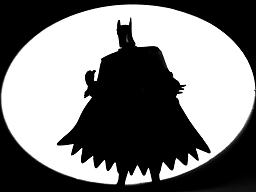Perhaps it was just a passing thought; perhaps it was a sudden inspiration. One of the members of the Christian Gamers Guild who has in the past suggested good ideas for topics for this series (including the Sex and Gender discussions) asked whether there had been an article on archetypes, and suggested that it might be the basis for a new miniseries.
Indeed, the series is in need of a new subject, something related to our faith and our games that has not been discussed in the previous thirty-eight columns. A theme that opens possibilities for several columns is a welcome idea. There was only one problem. What exactly is an archetype anyway, and what can be said about it?
Going to the dictionary can always get you in trouble, as there are more definitions to most words than anyone really understands or distinguishes. Archetype is no exception. The essence of the term is the idea of an original model after which similar things are patterned. That can mean something as specific as an official standard weight for a coin that other minted coins must match (the original meaning), or as general as that the British House of Commons is the original representative assembly which all other modern representative governments copy. It can also mean an ideal example of a type, that is, a theoretical original that does not exist in reality but which is extrapolated as having the characteristics identifiable in the supposed copies which we connect by those common features. Going deeper, psychologists use the term to refer to patterns of thought or symbol which we share unconsciously with society.

From all this, we can conclude that to speak of a character archetype is to refer to a kind of character which is at once very general and very specific. If we say that a character is a warrior, it suddenly conjures up for each of us an image, an identity, that includes certain aspects of appearance, abilities, personality, and motivations. The image that comes to me from that word is an olive-skinned heavily tanned muscular man near thirty wearing a bronze helmet and several pieces of armor, carrying a sword and metal shield. He has a resolved look on his face, a hard glint in the eyes, and an air of self assurance that is formidable. The image that word conjures for you will differ in the details, but by and large the description I just gave should ring a note of recognition in you. Yes, that is a warrior. Warriors will be very like that.
How, though, are archetypes connected to our faith, or even to our gaming? There is a sense in which I never play an archetype; I play a character, an individual created in my mind and expressed into the game. Yet there is another sense in which each of those characters is informed by archetypes, for better or worse.
I mused on this for several months, turning it over in my mind, starting the article, rewriting, reconsidering. What lessons could be learned from archetypes? I thought about what archetypes could be identified, and what they held. Turning over the idea of each archetype in my mind, something began to emerge.
An archetype is more than an ideal version of a character type. It is a focused collection of values, virtues we honor individually and culturally, which fit together as a cohesive coherent whole. In looking at the archetype, we learn something about ourselves; in looking at ourselves, we discover something about those archetypes. To some degree, we all aspire to be like not one but several, possibly all, of the archetypes with which we are presented. They represent excellence, refined superiority, the pinnacle of some characteristic which we, consciously or not, embrace and admire. Each tells us something about ourselves, and something about our culture. This is why we are drawn to them. They are portraits of heroes on which we might be able to paint our own faces. In studying the archetypes, we can come better to understand our own values.
Archetypes are not all good; each of them also has associated vices, failings that spring often directly from the virtues. Each serves not only as a goal to which to aspire, but as a warning against the pitfalls which lie in that direction. Thus in studying archetypes we can come better to understand our fears, temptations, and sins.
Similarly, in playing the archetypes, or more accurately in playing types that are modeled on them, we can express those values and those vices into the game, into the shared imaginary space, where others must interact with them.
Thus we have our miniseries: an examination of the archetypes, those images in our minds which carry meaning and value, and what those values and meanings are when we release them in play. In looking at several such archetypes, perhaps we can discover what it is that we value; and in discovering those values, we may be able to hold them up to the light of truth, challenging what we say we believe with what we seem to believe in practice.
I’m stepping out into what for me is uncharted waters here; it will be an excursion for me just to name more than the first couple of these, and an adventure to find out what they mean. But we’ll start out next month with one, and see where it takes us.
This article was originally published in June 2004 on the Christian Gamers Guild’s website. The entire series remains available at its original URL.
